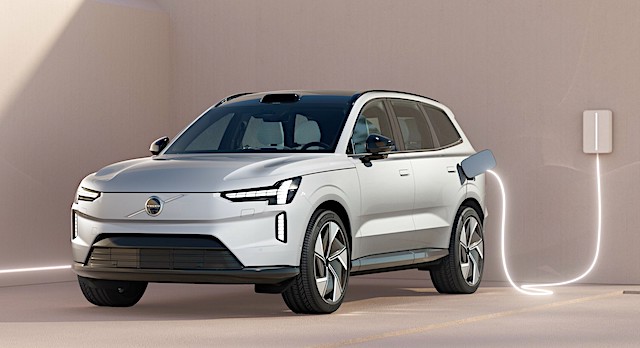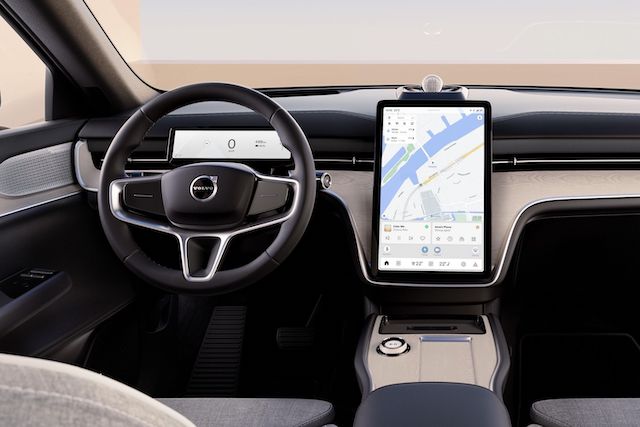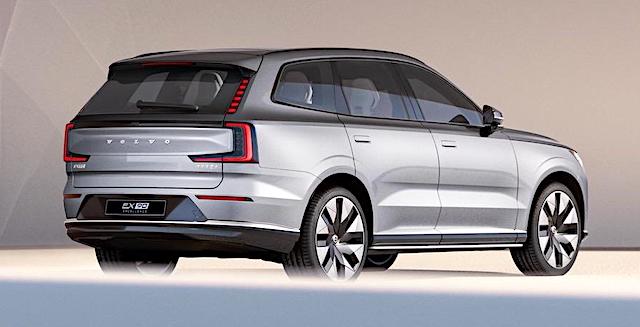
A laser measuring system available in premium Apple iPhones is a contributing reason why Volvo bills its all-electric EX90 as its safest vehicle ever.
The new SUV – the replacement for the current XC90 flagship – is expected to land in New Zealand later next year. Volvo NZ general manager Ben Montgomery said he has already received 22 deposits.
EX90 gets a camera-based Lidar (Light Detection and Ranging) system supplied by American company Luminar Technologies. The sensor sits on the roof above the windscreen in the three-row EX90.
It uses light in the form of a pulsed laser to measure distances. It can help the camera in an iPhone focus six times faster. Combined with an app, it turns the iPhone into a virtual tape measure. It can tap into AR, or augmented reality, to combine the real world and the virtual world.
In the EX90, it will detect shapes of objects, like cars, pedestrians, and cyclists, all without the help of GPS or a network connection. Lidar can also determine the vehicle’s precise location, by comparing the 3D images created by the sensor to detailed maps.
It will have a range of 250 meters with the ability to detect “something as small and dark as a tyre on a black road 120 meters ahead,” all while driving at highway speeds, says Volvo.
Lidar is backed by a safety package Volvo describes as “one of the most advanced sensor sets on the market.” It includes five radar systems, eight cameras, 16 ultrasonic sensors and infra-red and conventional cameras inside the vehicle monitoring the driver’s eye behaviour to determine whether they are paying attention or even perhaps impaired.
If the driver doesn’t respond, the vehicle will begin to slow down, eventually coming to a stop on the side of the road and activating the hazard lights. The infra-red sensors will be able to identify occupants, even animals, in the event of a collision.

The extensive suite of safety technology alone will make the EX90 more expensive than the current premium XC90, the plug-in hybrid Recharge at around $150,000. Indeed manager Montgomery has said as much.
Driving the 2.7 tonne EX90 is a 111kWh lithium-ion battery pack with an energy capacity of 270kWh. It comes from Chinese company CATL and powers twin permanent-magnet motors front and rear for all-wheel drive. Power peaks at 385kW in the premium model. A rear-drive EX90 with 360kW will also be available.
Like all current Volvos, its top speed is limited to around 180km/h, but instant torque will help it scoot from zero to 100km/h in under five seconds. Flush-fitting door handles, aerodynamic inserts in the wheels, and smooth lines gives it a coefficient of drag of 0.286Cd against the XC90’s 0.31Cd.

Volvo claims the EX90’s efficiency of up to 21kWh per 100km (roughly equivalent to 2.8-litres/100km) is helped by a declutching mechanism on the rear axle, which reduces power drain on the rear motor at steady speeds.
Range on paper for the AWD model is said to be 600km on the WLTP test regime. A 10% to 80% charge can be achieved in 30 minutes or so at up to 250kW on a DC charger. Vehicle to Load (V2L) is also fitted as standard. Simply, V2L means the battery can power appliances outside the car.
Early in development it looked as though the EX90 might get rear-facing cameras instead of mirrors. But Volvo ruled them out. “They are not legal in all countries,’’ designer Orjan Sterner said. “Personally I don’t think they are good and you need to balance their aerodynamic advantages against the drain on power that the screens represent.”
